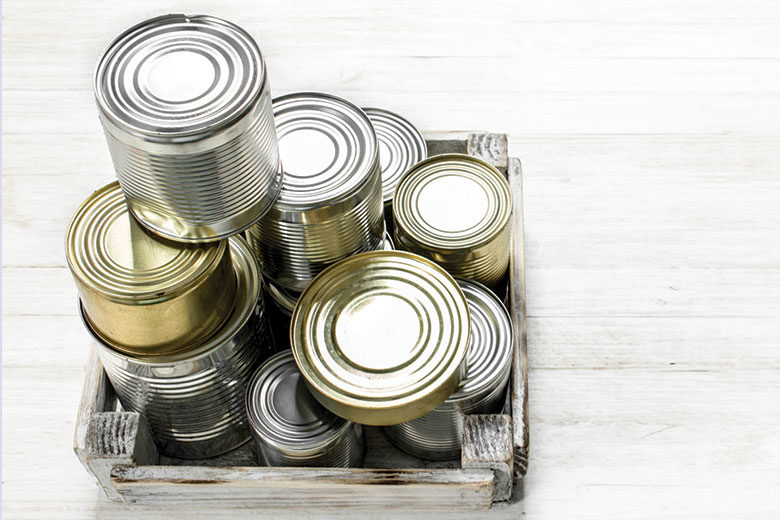
With food waste and the health of the environment becoming more important in shopping, cooking and eating decisions, it’s time to revisit canned foods as eco-friendly pantry staples and a way to add extra appeal to meals.
Recycle and Reduce
In the United States, steel cans are the most recycled food package. Steel can be reused over and over, meaning a metal can could be repurposed into a car, bridge or building.
Canned produce can help reduce food waste around the world. When farmers have a harvest surplus, extra fruits and vegetables are canned and preserved. And because most canneries are located near farms, it only takes an average of 4½ hours for produce to go from field to can.
One way to reduce food waste associated with fresh produce is to have canned fruits and vegetables on hand; canned produce has a longer shelf life and doesn’t require refrigeration (until opened, if storing leftovers).
Tips for Shopping & Stocking
Seasonal Favorites: Stock up on canned versions of favorites including corn, tomatoes, peaches, pears and cherries for off-season eating. Look for cans with no added sugars or salt.
Global Flair: Browse international aisles at the grocery store for foods such as canned water chestnuts, bean sprouts, straw mushrooms, bamboo shoots, lychee fruit, jackfruit, chipotle peppers in adobo sauce and artichokes.
Savvy Storage: Move older cans to the front of the pantry or cupboard and store newer purchases in the back. Use storage bins such as magazine holders, narrow plastic tubs or drawer organizers to keep pantry goods organized.
Quick Can Cooking
Snacks from Cans: Roasted chickpeas are a cinch to make with canned beans. It also is easy to make hummus: Drain and rinse a 15-ounce can of chickpeas, reserving 2 tablespoons of the liquid in the can. Puree the chickpeas and liquid with 2 tablespoons peanut butter, 3 tablespoons olive oil, 2 garlic cloves and a pinch of salt.
Grain Mix-ins: Add flavor, color and nutrition to pasta with canned artichoke hearts, diced tomatoes and cannellini beans. Or combine canned green chilies, corn and pinto beans with cooked rice for a fast Tex-Mex meal.
Jazzed-up Dressing: Puree a 15-ounce can of peaches, mangoes or apricots with ⅓ cup olive oil, ¼ cup vinegar and ¼ teaspoon each salt and pepper. Drizzle over a bowl of greens or stir into cooked grains such as quinoa or farro.
Beyond the Pie: Enjoy canned pumpkin, sweet potatoes and yams year-round by mixing into oatmeal, applesauce, chili or pasta sauce for a slightly sweet flavor and nutrition boost. Stir some into low-fat vanilla Greek yogurt with a dash of cinnamon
for a fruit dip or mix into hummus for a sandwich spread.
Speedy Soups: Save time by using canned green beans, corn, carrots and diced tomatoes to make a “heat-and-serve” chunky vegetable soup. Or puree canned potatoes, sweet potatoes or carrots as a base for creamed soup. Thicken broth with a can of refried beans for a Southwestern-style soup.
Instant Antipasti: Drain canned olives, mushrooms and artichokes, then place into individual small bowls and serve on a large board with cheese, crackers and bread. Add a dish of roasted canned chickpeas or homemade hummus.
References
Steel Food Can Facts. Cans Get You Cooking website. Accessed April 16, 2019.
The True Cost of Food. Cans: A Sustainable Solution. Can Manufacturers Institute. Accessed April 19, 2019.

